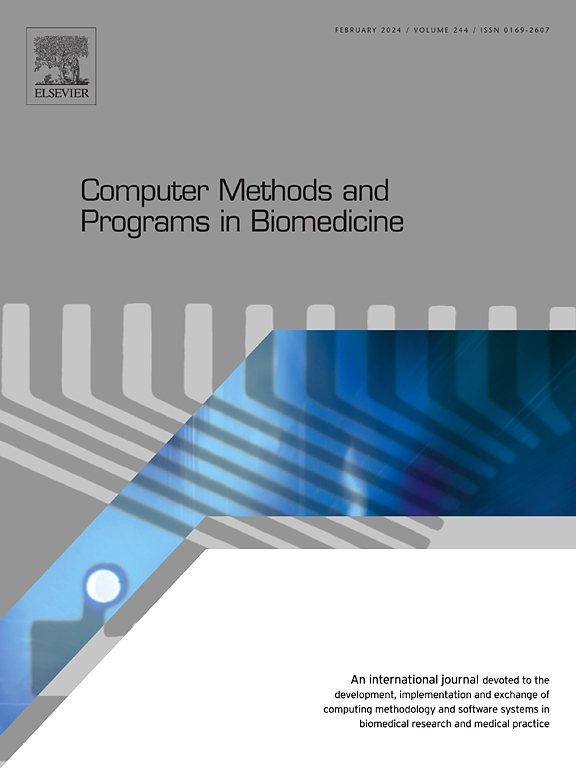Evaluation of mandibular advancement surgery efficacy in treating obstructive sleep apnea: A study on turbulence kinetic energy
IF 4.9
2区 医学
Q1 COMPUTER SCIENCE, INTERDISCIPLINARY APPLICATIONS
引用次数: 0
Abstract
Background and Objective
Obstructive sleep apnoea (OSA) is a prevalent sleep disease characterised by recurrent airway obstruction during sleep, resulting in diminished oxygen intake and disrupted sleep patterns. This study investigates the effectiveness of mandibular advancement surgery as a surgical intervention for obstructive sleep apnoea by analysing the postoperative alterations in turbulence kinetic energy (TKE).
Methodology
The research involved five subjects receiving mandibular advancement surgery (MAS). The quantification of TKE was performed both before and throughout the method using a combination of computational fluid dynamics (CFD) models and empirical measurements. A suitable grid size of 2.6 million cells for CFD simulations was determined by grid sensitivity analysis and corroborated with physical measurements.
Results
The findings indicated a significant increase in TKE for each individual post-procedure, with increments varying from 23 % to 460 %. The elevated TKE indicates a more rapid airflow in the upper airway post-surgery. This is probably attributable to alterations in the airway's morphology resulting from the surgery. The observed rise in speed and turbulence is theoretically supported by Bernoulli's principle, which elucidates the relationship between air flow velocity and the pressure it generates.
Conclusions
This study demonstrates that mandibular advancement surgery efficiently alleviates OSA by markedly enhancing airflow and diminishing turbulence in the upper airway post-treatment. The use of physical validation and grid sensitivity analysis in computational fluid dynamics simulations underscores the meticulous technique utilised, offering a comprehensive assessment of the efficacy of the surgical interventions for OSA.
求助全文
约1分钟内获得全文
求助全文
来源期刊

Computer methods and programs in biomedicine
工程技术-工程:生物医学
CiteScore
12.30
自引率
6.60%
发文量
601
审稿时长
135 days
期刊介绍:
To encourage the development of formal computing methods, and their application in biomedical research and medical practice, by illustration of fundamental principles in biomedical informatics research; to stimulate basic research into application software design; to report the state of research of biomedical information processing projects; to report new computer methodologies applied in biomedical areas; the eventual distribution of demonstrable software to avoid duplication of effort; to provide a forum for discussion and improvement of existing software; to optimize contact between national organizations and regional user groups by promoting an international exchange of information on formal methods, standards and software in biomedicine.
Computer Methods and Programs in Biomedicine covers computing methodology and software systems derived from computing science for implementation in all aspects of biomedical research and medical practice. It is designed to serve: biochemists; biologists; geneticists; immunologists; neuroscientists; pharmacologists; toxicologists; clinicians; epidemiologists; psychiatrists; psychologists; cardiologists; chemists; (radio)physicists; computer scientists; programmers and systems analysts; biomedical, clinical, electrical and other engineers; teachers of medical informatics and users of educational software.
 求助内容:
求助内容: 应助结果提醒方式:
应助结果提醒方式:


